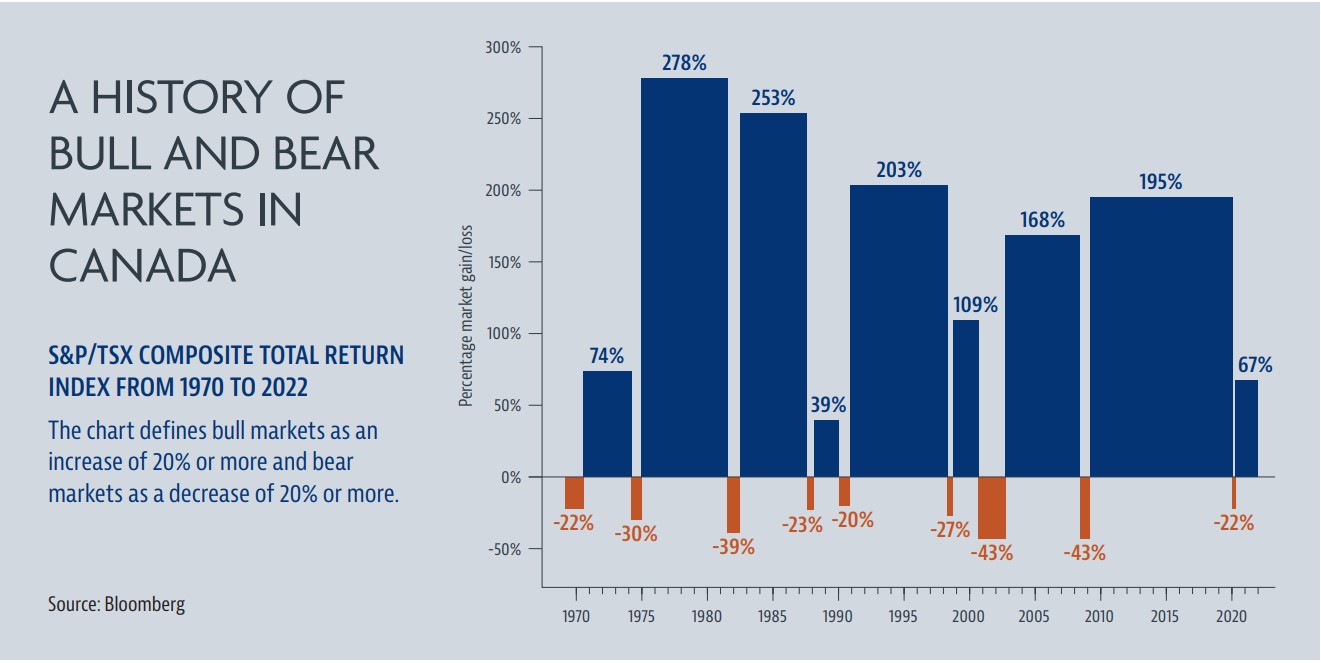When markets have been below their peak for some time, it’s helpful—psychologically and financially—to keep in mind that down markets have always been followed by recoveries. Psychologically, you’ll feel reassured that better days are ahead. Financially, you’ll be able to continue investing while prices are lower.
No one, experts included, knows when a bear market will end. What we do know is that, historically, the market eventually rebounds and our attention turns to investing during the recovery period.
TWO SCHOOLS OF THOUGHT
When the market shows signs of a recovery, some investors and money managers believe in taking an active approach. The practice is to invest more heavily in companies within sectors that outperform during market recoveries—typically, consumer discretionary, materials and real estate. Industrials and energy have also been known to be in the mix.
The other approach is to maintain a well diversified portfolio, without reacting to prevailing or anticipated market conditions. This passive approach avoids the risk of overweighting sectors that end up underperforming and gives you the security of knowing you’ll likely participate in whichever sectors happen to benefit from the upswing.
Which approach is better? The active versus passive approach is one of the longest-standing debates in the investment community. The answer often depends on personal preference and risk tolerance.
RECOVERIES COME IN ALL VARIETIES
Economists describe each recovery by the letter or shape it resembles when charted on a graph. A V-shaped recovery is the bestcase scenario, where the downstroke of the V shows the falling market and the upstroke traces a quick, direct recovery. Shapes also include U, W, L and swoosh, among others. This means investors must be prepared for just about any type of rebound—from short to long, from smooth to bumpy.
WHEN A RECOVERY IS VOLATILE
The path to recovery can begin with considerable volatility, tempting some investors to hold off on making their regular contributions. They no longer want to risk seeing their portfolio value fall. With an eventual market rebound in sight, these investors would rather wait on the sidelines during the volatile period until they’re more confident the market is in full recovery mode.
However, holding off is a gamble in itself. If you resume investing when prices are higher, which is quite likely, you’ll end up purchasing fewer shares or fund units for your money. Investing during a recovery should be the same as in any other stage: contribute on a regular basis to a well-diversified portfolio designed to meet your investment objective, time horizon and risk tolerance.
INVESTING MORE
When a market rebound is under way, some people may be inclined to invest more than their regular contribution amounts—for example, extra cash from regular savings or a recent lump sum such as a tax refund. Investors who were hesitant about investing extra cash during the downturn may suddenly feel more optimistic about buying into the market when they see a potential bull run on the horizon. While a rebound could be an opportune time to invest more, it’s important to stick to your personal asset allocation. If you choose only equities to take advantage of the rising market, you’ll end up investing beyond your risk tolerance.


